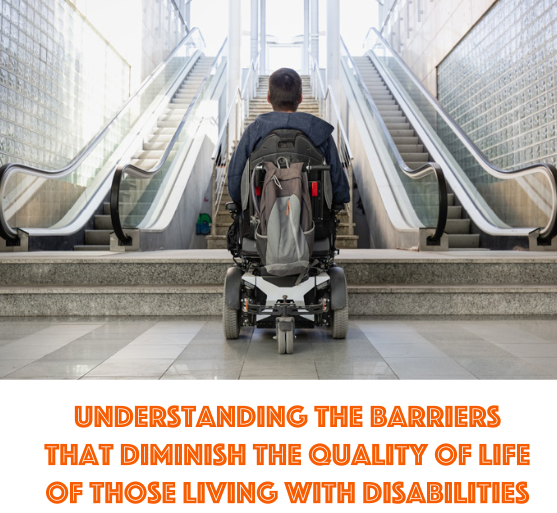Understanding the Barriers That Diminish the Quality of Life of Those Living with Disabilities

People living with disabilities face numerous barriers that impact their quality of life negatively. Some of these barriers are by accident while some of them are out of ignorance by people who do not know they put them up in the first place. While it is true that some of these barriers might also affect non-disabled people, their impact is magnified when they affect those living with disabilities. In this article, we will look at some of these barriers and some potential solutions.
Attitudinal Barriers
Attitudinal barriers stem from how people perceive those living with disabilities. We know that these individuals are often subject to discrimination and prejudice from the large society. Many people treat them with pity, fear, and contempt, with some making conscious efforts to avoid them. Most of the barriers in this category arise from misunderstandings and misconceptions that have no basis in fact.
Perhaps the most common class of attitudinal barriers are stigma, discrimination and prejudice. Some people feel like there is something that could have been done to prevent the disability or to make it better. This leads to them treating persons with disabilities badly.
The second is stereotyping. It is, sadly, common for a lot of people to assume that persons with disabilities are lacking in one area or another. Some think these individuals are incapable of accomplishing everyday tasks by themselves, which is completely false.
Mobility Barriers
Mobility barriers affect those who have limited mobility. Most of our world is built for people who do not have disabilities, and this ranges from almost all vehicles, to access to buildings and other spaces. There are also limited transportation options for those living with disabilities and mobility issues, even though the number of options has been increasing in recent years.
Mobility cars have made it a lot easier for people who rely on wheelchairs and have made their movement a lot easier. Another brilliant solution to those who require mobility cars are used WAVS, especially if you’re over the age of 67 before registering as disabled as they wouldn’t be eligible for the higher rate allowance. Used WAVs offer a great sense of freedom and independence for the elderly within this age group, allowing them to go about their day as they please.
Technological Barriers
As with mobility barriers, most of the technology we use is built for those without disabilities. We can see this from the design of the devices we use every day to the software that runs in them. The shapes and sizes of today’s devices can make it harder for those living with disabilities to access the same technology that other people take for granted.
Even though hardships remain, those in technology have made a conscious effort to make technology much more accessible. Think about the virtual assistants we use today that help millions of people living with disabilities complete daily tasks much easier. There are also numerous screen-reading technologies that help those with visual impairment to “read” everything from books and messages to web pages online.
Institutional Barriers
Institutional barriers refer to a class of policies that discriminate against people with disabilities and hinder them from participating in various things in one way or another. Most policy barriers exist due to unintentional errors, ignorance, omissions and assumptions. A common example is only allowing students in a learning institution to use one medium to access course content.
The best way to deal with such barriers is to encourage those who encounter them to report them and for those who receive these reports to take action on what is contained therein. Although it can take time and effort to change the way things are done to remove such barriers, it can be done with enough goodwill.
Environmental Barriers
The mobility barriers we have discussed above can be thought to be part of environmental barriers. Environmental barriers are present in our environment. They hinder the participation of persons with disabilities in society. An example is physical barriers such as building decisions, room layouts, access paths and access points that make using buildings more challenging.
People with sensory disabilities including those with Autism Spectrum Disorder or hearing and vision impairments are typically affected disproportionally compared to other persons, and they are much more likely to find hardships due to communication barriers and difficulties expressing themselves. The barriers they face in such situations make communication a lot more difficult.
An issue that those with mobility challenges face is the use of stairs instead of ramps. While this impairs their movement, it also impairs their ability to access and be accommodated into spaces they need to access.
People living with different disabilities face difficulties that stem from the different barriers that exist in the world. We all could do a little better in trying to eliminate these barriers as much as possible and encouraging those who can remove ones that we cannot remove on our own.





















